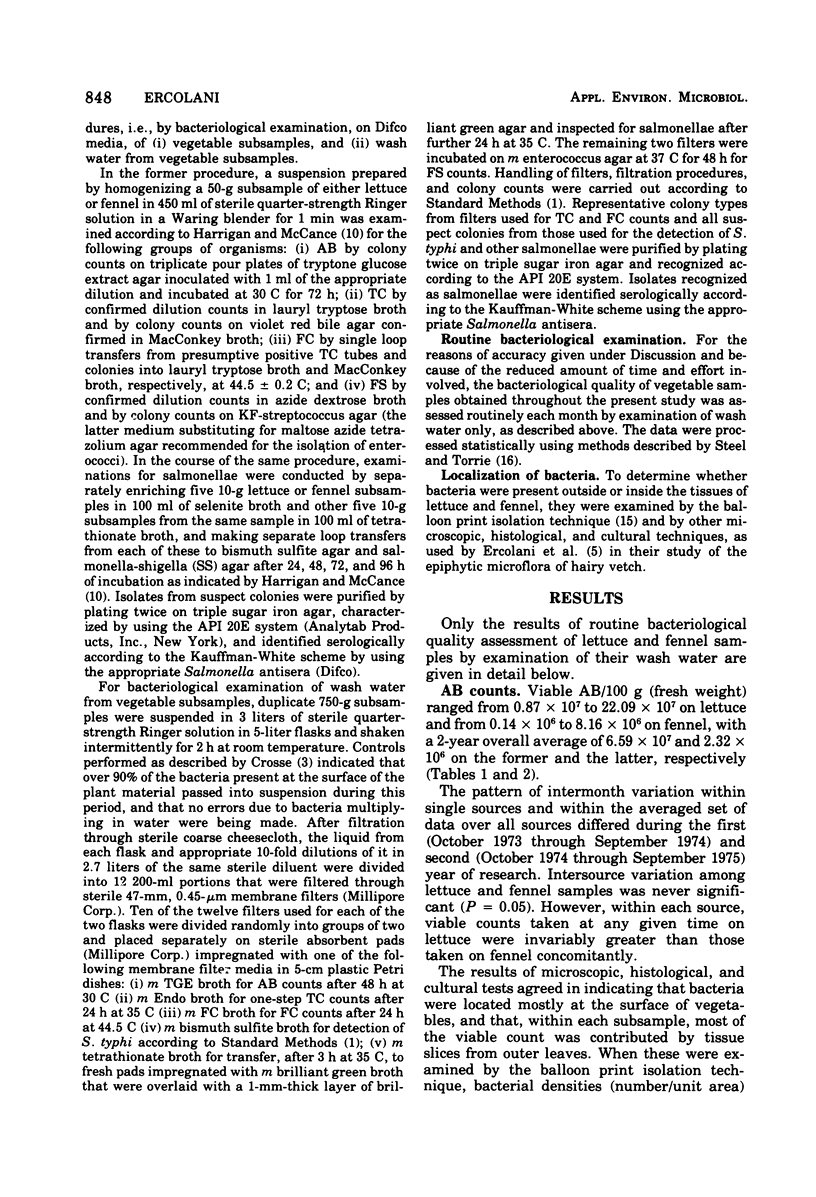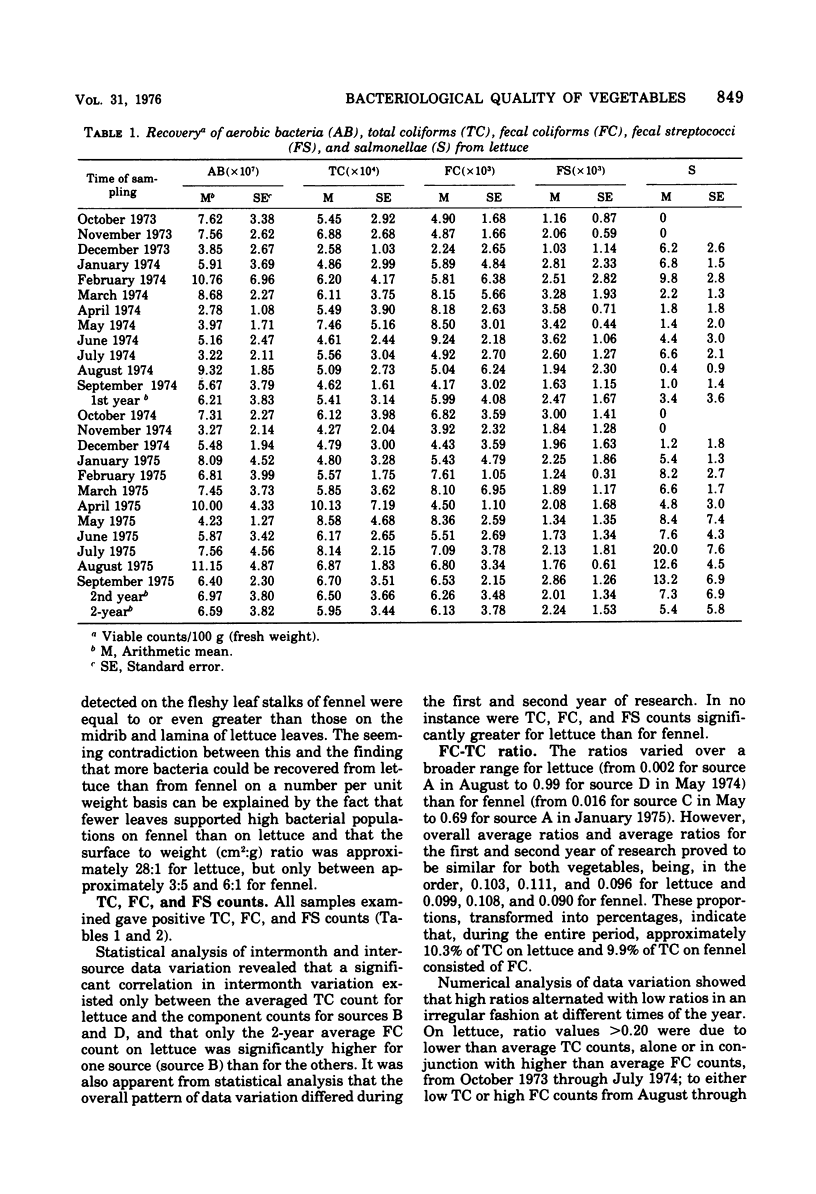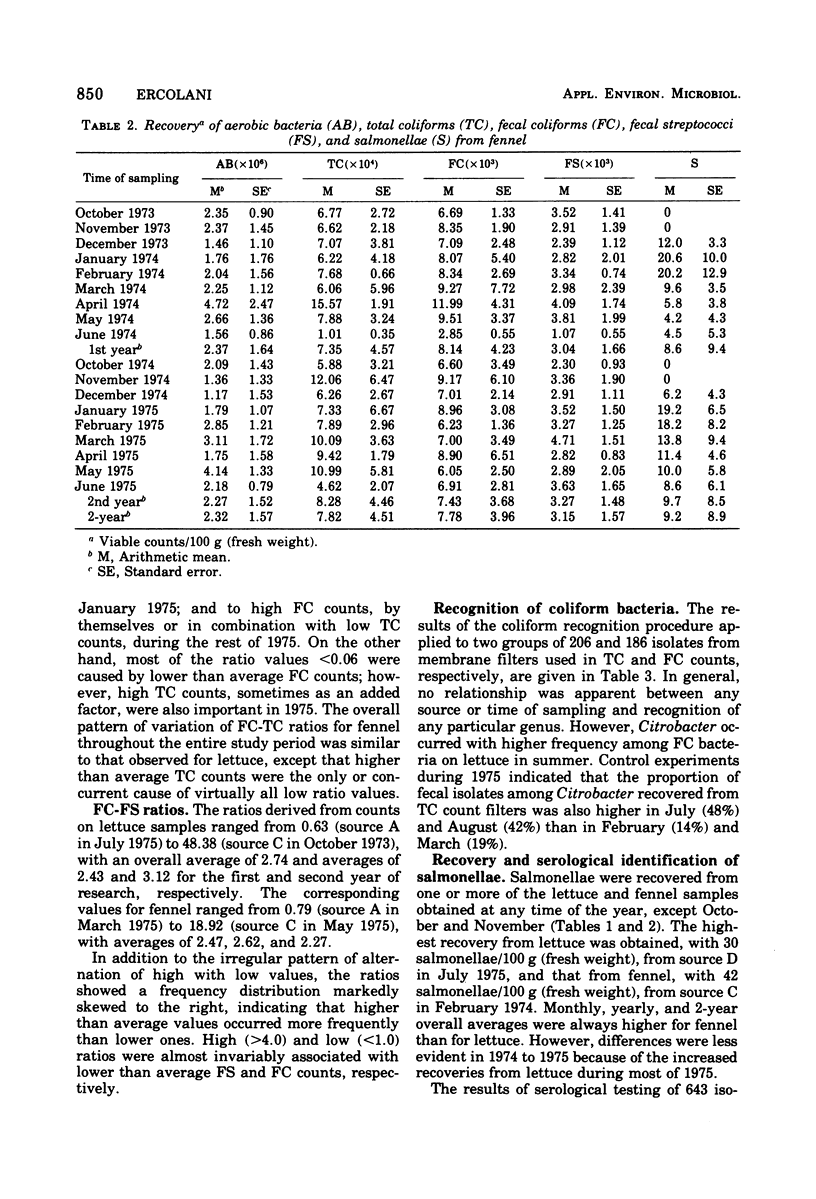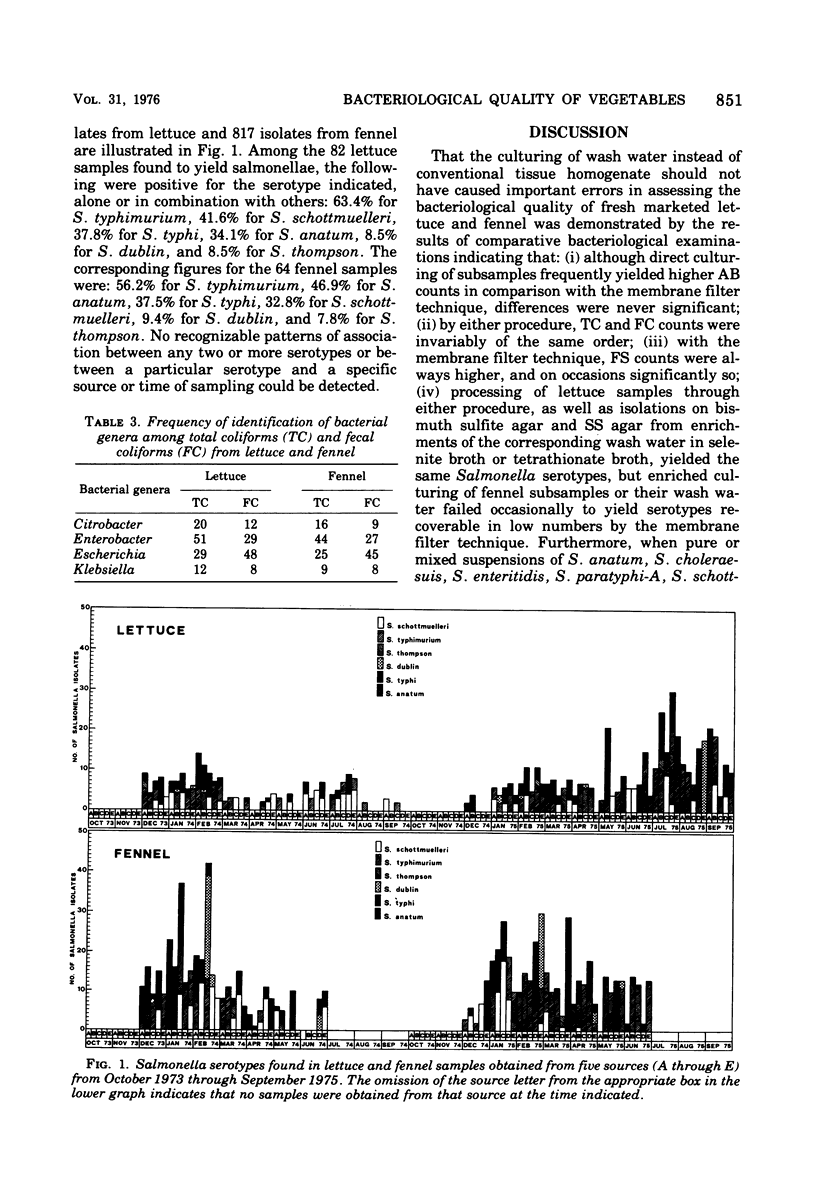Abstract
One-hundred and twenty samples of lettuce and 89 samples of fennel purchased from five retail outlets in the city of Bari (Italy) from October 1973 through September 1975 were examined for viable aerobic bacteria (AB), total coliforms (TC), fecal coliforms (FC), fecal streptococci (FS), and salmonellae. Comparative tests indicated that the results of bacteriological analysis of wash water from either vegetable by a membrane filter technique compared favorably with those of conventional cultural examination of the vegetable tissue for the purpose of providing an indication of the bacteriological quality of the samples. Using the membrane filter technique, 2-year average counts of 6.59 X 10(7) for AB, 5.95 X 10(4) for TC, 6.13 X 10(3) for FC and 2.24 X 10(3) for FS/100 g (fresh weight) were obtained with lettuce; with fennel, the corresponding figures were 2.32 X 10(6) for AB, 7.82 X 10(4) for TC, 7.8 X 10(4) for FC, and 3.15 X 10(3) for FS. Indicator bacteria were present in all samples examined. In addition, 68.3% of the lettuce and 71.9% of the fennel samples yielded one or more of the following Salmonella serotypes: S. schottmuelleri, S. typhimurium, S. thompson, S. dublin, S. typhi, and S. anatum.
Full text
PDF





Selected References
These references are in PubMed. This may not be the complete list of references from this article.
- Brown C., Seidler R. J. Potential pathogens in the environment: Klebsiella pneumoniae, a taxonomic and ecological enigma. Appl Microbiol. 1973 Jun;25(6):900–904. doi: 10.1128/am.25.6.900-904.1973. [DOI] [PMC free article] [PubMed] [Google Scholar]
- Duncan D. W., Razzell W. E. Klebsiella biotypes among coliforms isolated from forest environments and farm produce. Appl Microbiol. 1972 Dec;24(6):933–938. doi: 10.1128/am.24.6.933-938.1972. [DOI] [PMC free article] [PubMed] [Google Scholar]
- GELDREICH E. E., KENNER B. A., KABLER P. W. OCCURRENCE OF COLIFORMS, FECAL COLIFORMS, AND STREPTOCOCCI ON VEGETATION AND INSECTS. Appl Microbiol. 1964 Jan;12:63–69. doi: 10.1128/am.12.1.63-69.1964. [DOI] [PMC free article] [PubMed] [Google Scholar]
- Geldreich E. E., Kenner B. A. Concepts of fecal streptococci in stream pollution. J Water Pollut Control Fed. 1969 Aug;41(8 Suppl):R336+–R336+. [PubMed] [Google Scholar]
- Karimov Z. K., Abdusamatov A. G., Zhil'tsova E. I., Astashina M. K., Artykov K. A. Rol' otdel'nykh faktorov peredachi infektsii v rasprostranenii paratifa. Zh Mikrobiol Epidemiol Immunobiol. 1972 Jun;49(6):54–56. [PubMed] [Google Scholar]
- Lin S., Evans R. L., Beuscher D. B. Bacteriological assessment of Spoon River water quality. Appl Microbiol. 1974 Aug;28(2):288–297. doi: 10.1128/am.28.2.288-297.1974. [DOI] [PMC free article] [PubMed] [Google Scholar]
- Rusch V., Leben C. Epiphytic microflora: the balloon print isolation technique. Can J Microbiol. 1968 Apr;14(4):486–487. doi: 10.1139/m68-080. [DOI] [PubMed] [Google Scholar]


